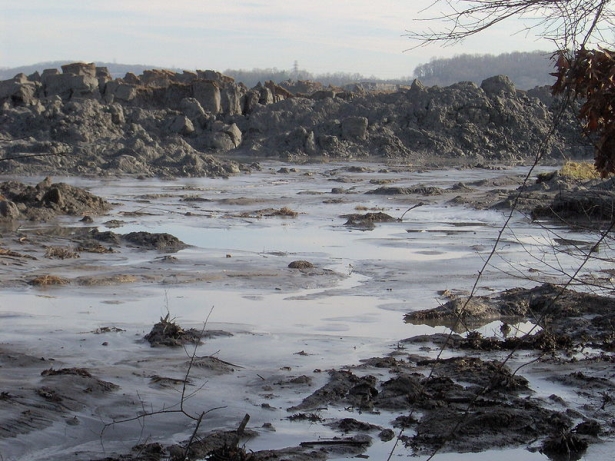Stop what you’re doing and proceed immediately to the current issue of GQ magazine, which contains a blockbuster piece of investigative journalism: “Black Tide,” by Sean Flynn. Here’s the slug:
Just days before Christmas last year, an environmental disaster one hundred times the size of the Exxon Valdez (yes, you read that right) unfolded on a riverbank in Eastern Tennessee. A wave of poisonous sludge buried a town … along with the myth of Clean Coal.
Flynn traces the history of the people and land affected by the Kinston, Tenn. coal ash spill, and uses that as a jumping off point for a searing look at the damage coal is doing to Appalachia. It’s criminal that there have been so few follow-up stories on this disaster, especially given that the problem of the spilled ash remains unsolved and possibly insoluble. (Thus far TVA has … sprinkled hay on it.) Some 1,500 similar coal ash storage sites remained scattered across the Southeast, largely unregulated.
Flynn’s piece is comprehensive, precise, and devastating.
And difficult to sum up in a blog post. I particularly enjoyed this passage, though, which comes late in the story:
The Term clean coal entered the lexicon in its current faux-eco-activist incarnation—with the implication that coal can be a source of nonpolluting fuel, that it can be scrubbed of its toxins and its carbon dioxide rendered harmless—with stunning speed, largely in the past two years through the expensive efforts of two groups: the American Coalition for Clean Coal Electricity, a lobbying group for coal-burning industries, and the Hawthorn Group, a marketing firm hired by ACCCE.
They are quite proud of their success, too. In December, about the time of the Kingston disaster, Hawthorn posted a newsletter on its Web site extolling the “highlights of a recent grassroots campaign Hawthorn created and managed” for ACCCE. Leaving aside the fact that grassroots campaigns typically are not created and managed by hired flacks, Hawthorn did have much glad news to report. Throughout the presidential campaign, it had focused on “finding creative ways to increase the visibility of the issue and…demonstrating strong voter support,” which is marketing-speak for littering crowds with fresh-faced human props in shirts and hats screened with clean coal. Do that with enough “branded teams,” as Hawthorn calls them, at enough rallies; buy enough TV spots; plead your case to enough reporters, and eventually the idea spreads that coal is downright pristine—that it can even, as Hawthorn puts it, “be part of the solution to climate change.” It was genius, and extremely effective. By the fall of 2008,
President-elect Obama and Senator McCain, their running mates and their surrogates adopted our language and included it as part of their stump speeches. ACCCE shaped the debate by finding supporters of the candidates and turning them into clean coal advocates.
Obama still talks about it, and he gets cheers every time. Because the public now believes in clean coal. Hawthorn polled what the firm considered “public opinion leaders” in September 2007 and again at the end of 2008 on, among other things, whether they favored burning coal to generate electricity. The first go-round was a split: 46 percent in favor, 50 percent opposed. But after a year of Hawthorn bleating “clean coal” over and over, support rose to 72 percent—and opposition nose-dived to 22 percent.
Results such as these would be impressive no matter what the issue. Yet they are especially so in this instance, because the idea Hawthorn is selling—Coal is clean!—is complete horseshit.
Indeed.
Please go read the story. Buy the issue on newsstands. Pass it along to your friends.



